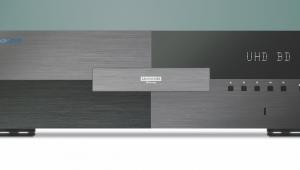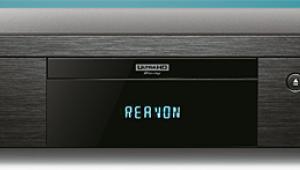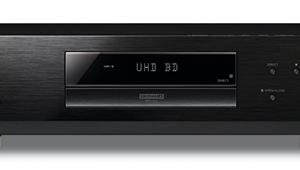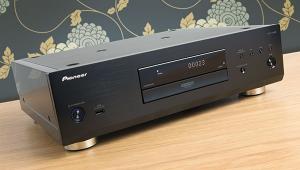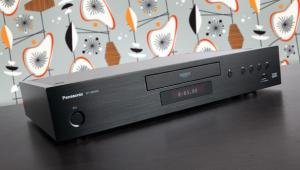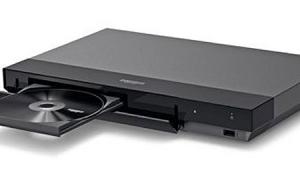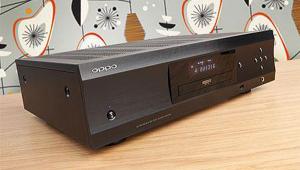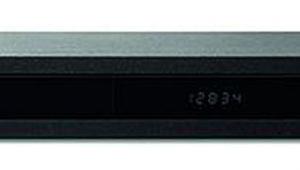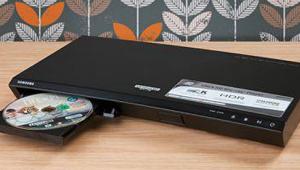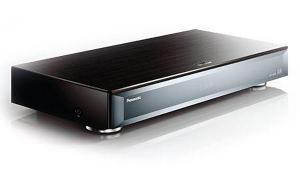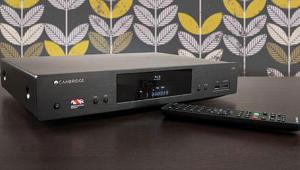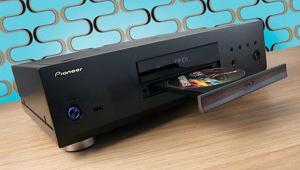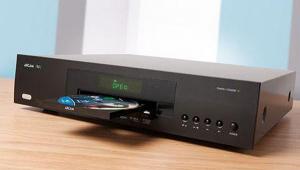Oppo BDP-95EU review
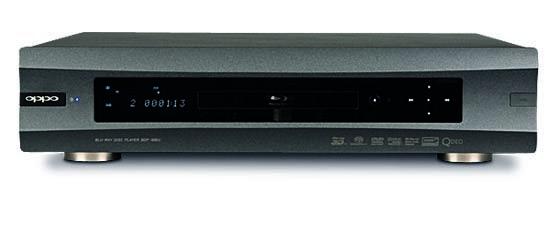
OPPO is not a brand that immediately springs to mind when you think high-end AV. But over the years, this largely anonymous outfit has consistently produced disc players that quietly over-deliver. The BDP-95EU is its latest and most ambitious model.
Priced at £900 it may seem a tad expensive, but in reality this audiophile grade Blu-ray deck is actually a bit of a bargain. It may be a good deal more expensive than its BDP-93EU sibling, but it is a fundamentally different product. More significantly, it’s a massive £300 cheaper than the NuForce Special Edition BD83SE, which hit the UK at £1,300 late last year (reviewed here). That unreservedly expensive Special Edition uses the same Sabre 32 DACs that are featured here. And, if anything, the BDP-95EU trounces it in every other respect.
Prestigious buildThe BDP-95EU is both handsome and sturdy. While mainstream Blu-ray brands are constrained by the gastric band of high-street competition, this model is engorged with high-fidelity largesse. Thanks to a heavy metal chassis and sculptured front fascia, it both looks and feels prestigious.
Generous back panel connectivity also sets it apart from the pack: there’s a balanced stereo XLR analogue output for those with matching amplification, plus an e-Sata port should you wish to hook up an external media drive.
You also get a 7.1 analogue phono output bank; RS232 port for custom installation integration; two HDMI outs; composite video and component; stereo phonos; Ethernet LAN; and a pair of digital audio outs (one coaxial, the other optical).
The twinned HDMIs have several uses. Most importantly, they allow those with non-3D compatible legacy AV receivers to integrate this dimensional player into their systems: the Primary HDMI output goes directly to a 3D display while the secondary output carries the lossless bitstream audio to the AV receiver.
The dual HDMIs can also be used to output the same video signal to different displays simultaneously – although be aware that only the primary output is supported by the unit’s advanced video processor. There are two USB ports, one on the rear and the other on the front fascia, hidden behind a rubber bung. The BDP-95EU does not have integrated wi-fi, but a USB dongle is provided in the box.
I was less impressed with the zapper. The remote handset is so large and heavy, it’s like wielding Mjolnir. On the plus side it is backlit, so you’ll be able to use it as a torch to find any escaped grains of popcorn.
Don’t mention MP3sAs with previous OPPOs, this deck is compatible with both SACD and DVD-Audio discs, as well as the usual roster of BD, DVD and CD formats. Indeed, within the setup menu there’s an option to output DSD direct, in the event that you have an AVR capable of receiving the SACD bitstream.
While the BDP-95EU doesn’t open the door to any VOD portals, it can stream media across your network and from USB. File support in both cases is good – with one notable exception – the deck doesn’t recognize MP3s. This is unfortunate, as its audio support otherwise extends from WAV and AAC to esoterica such as Ogg, Ape and FLAC. OPPO needs to resolve its issues with the MP3 licensing body as this omission could be a deal breaker for those with large collections of MP3s.
Video compatibility is more straightforward. The deck played out my entire collection of test files both from a local USB drive and AVI, MOV and MKV-wrapped unspooled content across a LAN from a NAS. However, SRT subtitle support is restricted to local media.
The OPPO does reach out online for extra functions, but finds only a Picasa photo-sharing application. Not something anyone is going to shout about.
Picture refinementsThe player itself offers a variety of image manipulation adjustments, including Brightness, Contrast, Sharpness and Noise reduction. These should only be tweaked once your display has been correctly calibrated.
Take care also in the setup menu. Do not select PAL as your TV System in the Picture menu as this can cause some Blu-rays to stutter like King George VI. Select the Multi-System option instead.
Other refinements buried in the rather bland setup menus include a Source Direct output mode, which is useful if you use an external video upscaler, and a Pure Audio mode, which triggers a flat, black video output from the HDMI, dims the power button and turns off the front panel display.
Disc loading speeds are on the right side of agile: our resident Speed Kings SE Blu-ray nipped from tray loading to onscreen menu in 38 seconds, while the remastered Goldfinger served up the 007 logo in 59 seconds.
Blazing performanceThe BDP-95EU employs some very powerful audio visual silicon. Fuelling the primary HDMI output is Marvell’s Kyoto-G2 video processor running the latest iteration of its Qdeo technology, while ESS SABRE32 Reference ES9018 DACs sit at the output stages of both the 7.1-channel analogue output and the analogue stereo output. All are put to good use. Mozart’s Violin Concerto in D Major, as found on 2L’s delicious 2007 CD sampler, is delivered with effortless detail. It’s immediately notable that the two-channel analogue soundstage of the OPPO BDP-95EU has more space and air than its HDMI presentation, which in itself isn’t too shabby. For the record, I didn’t use the XLR outputs, not having matched amplification.
Our Tech Labs measured the BDP-95EU’s analogue audio jitter figure at 157 picoseconds - a high-quality result and an improvement on the BDP-93EU.
Clarity jumps another notch with Super Audio CD playback. My new favourite SACD demo disc is Chaotic Planet by HYPS, a beautifully engineered 5.0 surround mix of modern jazz (Pony Canyon, Japanese import), and this OPPO lapped it up: imaging is fast, dynamic and musical.
The player’s Pure mode is particularly welcome when listening to music. 2L’s DTS HD 7.1 96/24 Blu-ray of Ole Bull: Concerto Fantastico is a captivating audio experience, to which the OPPO gives tangible depth and height, but its static images will do the average plasma display no favours at all. Flick on Pure and let yourself relax, as the black video feature instantly washes over, and protects your screen.
Video quality is downright gorgeous. HD images are effortlessly detailed and nuanced. The player works fine with 3D Blu-rays, delivering the frame sequential images without comment.
The BDP-95EU also offers superior DVD playback, with above average (pixel-based, motion-adaptive) deinterlacing and upscaling. The Qdeo D2750 video processor does a good (although not flawless) job with the Silicon Optics HQV test disc, adding silken edges to the classic fluttering flag challenge.
Qdeo works down the chain as well as up, reducing noise and smoothing edges of any compressed video files you might be streaming. It’s a definite step up from the Anchor Bay VRS solution seen on the BDP-83.
Class leaderWith its phenomenal build quality and audiophile performance, the BDP-95EU can be considered reference grade kit. The player shines with both two-channel and surround audio and is positively class-leading when it comes to video clarity. And with its 3D compatibility at least you know you’re covered if the kids want to watch Ice Age 3 in funny glasses. Chuck in the fact that for an extra £100 you can pick up a version that will spin Blu-ray and DVD platters from all corners of the globe and it’s hard to criticise – unless you’re desperate to play MP3 files.
HCC VERDICT
Oppo BDP-95EU
Price: £995 Approx
Highs: Pristine video quality and music performance; impressive build; twin HDMI outputs
Lows: No MP3 file support; woeful internet content portal; big remote
Performance: 5/5
Design: 5/5
Features: 4/5
Overall: 5/5
Specifications
3D: yes
Upscaling: yes to 1080p
Multiregion: yes Both Blu-ray and DVD
HDMI: yes two v1.4a
Component: yes one
Multichannel analogue: yes 7.1 phonos
Digital audio: yes optical and coaxial digital outputs
SACD/DVD-A: yes/yes
Dolby TrueHD/DTS HD decoding: yes/yes
Dolby TrueHD/DTS HD bitstream: yes/yes
Profile 2.0: yes
Dimensions: 430(w) x 98(h) x 311(d)mm
Weight: 7kg
Features: Ethernet; USB media playback; network media streaming; Sabre DACs; Pure Audio mode; backlit remote handset; balanced XLR outputs
 |
Home Cinema Choice #351 is on sale now, featuring: Samsung S95D flagship OLED TV; Ascendo loudspeakers; Pioneer VSA-LX805 AV receiver; UST projector roundup; 2024’s summer movies; Conan 4K; and more
|

